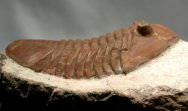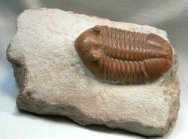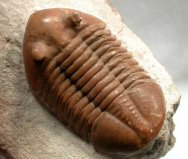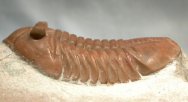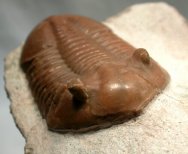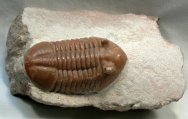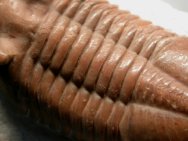Asaphus lepidurus
Trilobite Order Asaphida, Superfamily Asaphoidea, Family Asaphidae
Geologic Time: Lower Ordovician; Wolchovian Horizon
Size: 64 mm
Fossil Site: St. Petersburg region, Wolchow River, Russia
|
Coming from an inland sea during the lower to middle Ordovician, the Russian trilobites from near Saint Petersburg, Russia participated in the Great Ordovician Radiation, which saw marine animal diversity increase three-fold more than the Cambrian Explosion. The Russian asaphid trilobites are a particularly interesting example of descent with modification. |
